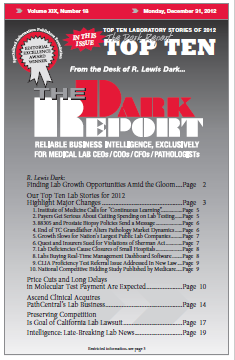CEO SUMMARY: In addition to a steep cut in the 88305 CPT code, anatomic pathology laboratories can expect cuts in the payment from Medicare for molecular and prostate biopsy testing. Two national experts in lab billing and reimbursement warn labs to expect confusion in how both public and private payers implement these new policies. Overall, […]
To access this post, you must purchase The Dark Report.


